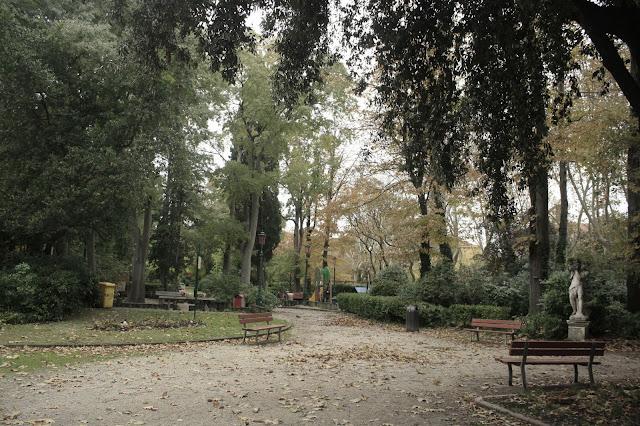Venezia's whimsical landscape.
The terminal of Venezia was across its Grand Canal. Upon stepping down, the setting was already reminiscent of an eye-candy amusement park, except that this city was the original. Water taxis were already lined up by the bridge, ready to fetch tourists and locals.
It was already in the afternoon when we arrived.
We tried to walk around the vicinity and rode a water taxi. However, the rainy and chilly weather made us retreat back to the comfort and warmth of our hotel rooms.
The following day was better compared to the previous one. Our only whole day at Venezia was planned to be spent at an architecture exhibit and at the city itself.
A few minutes from the terminal was the Ponte di Calatrava. This bridge was designed by the Spanish architect and engineer: Santiago Calatrava. It was contemporary-looking compared to its adjacent surroundings.
From there, we transferred by water taxi. This was the main mode of transport in this floating city. Gondolas were mostly used for touristy purposes.
We arrived at Venezia Biennale: a contemporary exhibit of art and architecture that is only held once every 2 years.
It was set in Giardini, which is a garden in Italian. This picturesque park was actually built by Napoleon Bonaparte. Permanent pavilions from 30 different countries were scattered in the area. These cozy structures housed exhibits according to the theme of that Biennale.
This pavilion from Finland was designed by Alvar Aalto. It showcased schools in their local country.
For the Egyptian pavilion, they displayed installation art made of gold to depict illumination with a political sense.
At the center was the main exhibit hall.
It was a display of installation pieces, including miniature models of architecture.
Its cafeteria was a chaos of interesting design. Sadly, like most Italian restaurants, payment when sitting down inside was more expensive. We had to settle outside to eat our food at a cheaper price.
Our afternoon was spent exploring more of Venezia. This was a typical backdrop. Its road was, however, wider compared to the cozy and maze-like corridors of the rest of the city.
This was Basilica San Marco. It had a distinct personality that blended with the dreamy landscape of Venezia. Its interiors were made of gold and bronze mosaic.
In front was the Piazza San Marco and its famous Campanille. A lot of tourists, locals and pigeons gathered in this area.
Using helpful signs starting from the piazza, we were able to reach Ponte di Rialto. It had souvenir stores lined up at its sides.
From its peak, one can have a view of the Grand Canal and its surrounding buildings.
Since Venezia had a cooler climate, we had to retire earlier compared to the other cities. As early as 7 in the evening, we were already heading back to our hotel.
Our last day gave us the sunny side of Venezia. We headed to another venue of the Biennale.
It was more condensed inside. A lot of interactive and large installations were housed in this area. This photo showed a curvy ramp that went up then returns down while inside a spacious and misty room.
We spent the entire morning at the Biennale before we headed back to Firenze for some last-minute errands. It would be a long homeless and chilly night on our last day in Italia.



























No comments:
Post a Comment